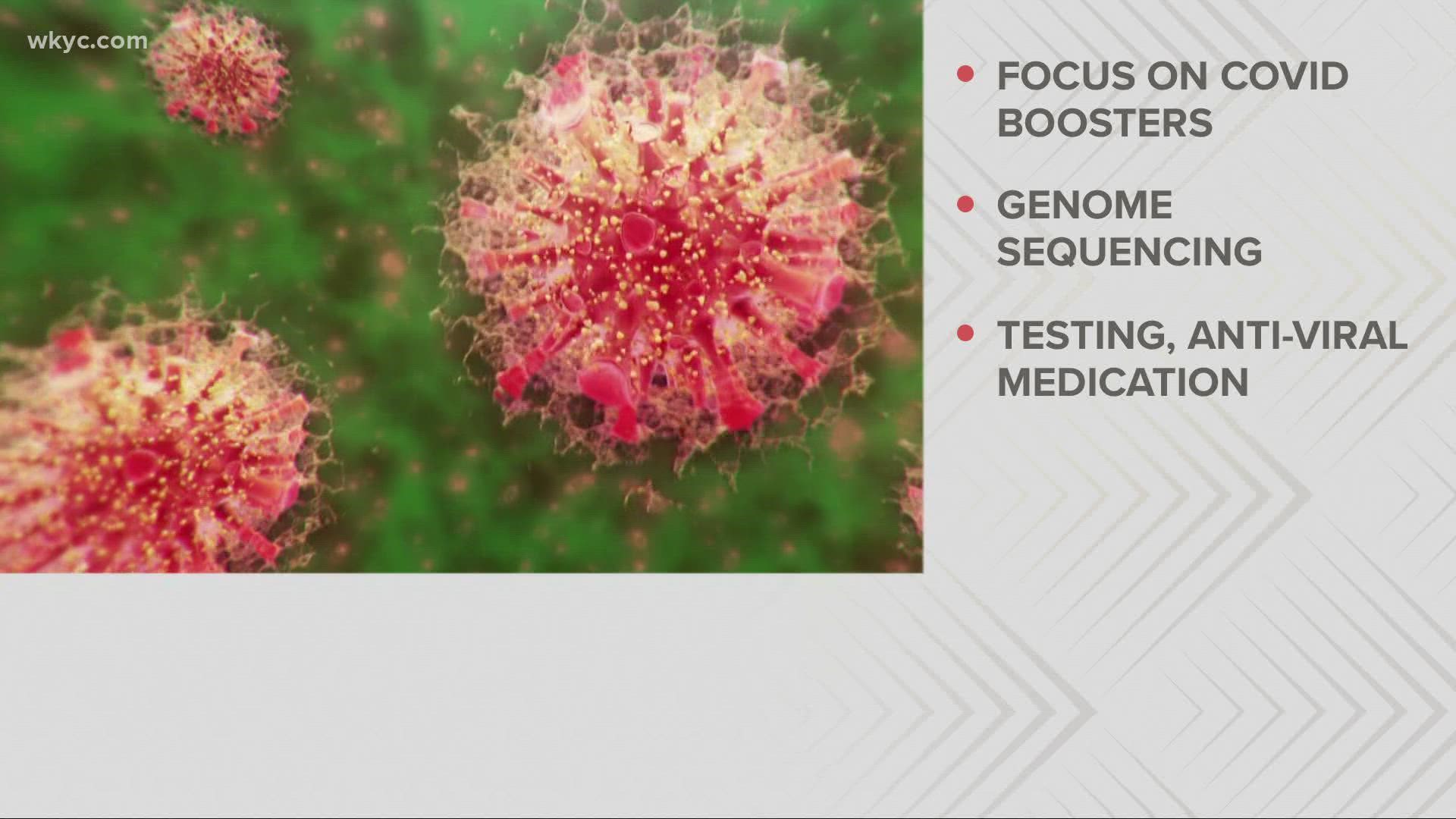CLEVELAND — Two years ago on Thursday, our sense of normal in Ohio started to shift as public portions of the Arnold Classic in Columbus were canceled as the coronavirus began to crisscross the country.
Within days, on March 9, 2020, Ohio was under a state of emergency. “This is going to be a long road. We’ve not seen something like this before,” said 3News Senior Health Correspondent Monica Robins in a broadcast March 10, 2020.
As usual, she was right. It has been a long road, but two years later, we’re in a much better place. Nearly all of Northeast Ohio is now considered low risk for community spread, according to the CDC’s map. Statewide cases and new hospitalizations continue to fall under 21-day averages.
“Cleveland Clinic, in terms of Northeast Ohio, has dropped from 1,200 COVID patients in the hospitals, down to just under a hundred this morning,” said Dr. Robert Wyllie.
Wyllie is the Clinic’s Chief Medical Operations Officer and stepped up to lead all of Ohio’s Zone 1 as hospitals started working together. He’s not ready to say we’re in the endemic phase of the coronavirus yet. “I don't know. I'm not sure that anybody does for sure,” said Dr. Wyllie in an interview with Sara Shookman. “I think we're just going to have to wait and see what happens. How is the BA.2 variant going to play out or are other variants going to come in? I think right now we're in a good place, but we just should be alert and increase the vaccination rate while we're in this lull,” he said.
The White House Coronavirus Task Force met in person for the first time Wednesday, where they unveiled a 96-page plan to keep moving forward with four main goals.
The primary focus is on vaccines, noting three doses of the mRNA vaccines are much better than two. It's also investing in genomic sequencing as it braces for any new variants that could pop up. And starting next week, Americans can order additional free at-home testing kits.
If someone tests positive in person at a pharmacy or clinic, anti-viral medications could be available on the spot. Getting those treatments in the first few days of illness can make a big difference keeping people out of the hospital.
The new message from health officials is it’s safe to return to normal routines, setting pandemic exhaustion and frustration aside.
“For some people it's going to be hard to take the masks off,” said Dr. Wyllie. “We came through this together. The people of Cleveland, Northeast Ohio, the hospital systems, all pitched in, and we got through it. We did a lot of good work. We're much better prepared looking at the future. We should be hopeful.”
You can watch Sara Shookman's complete interview with Dr. Robert Wyllie in the player below:
Related Stories:

